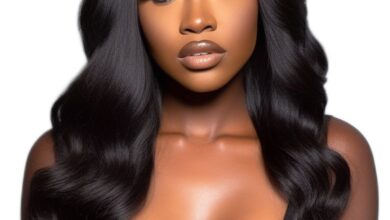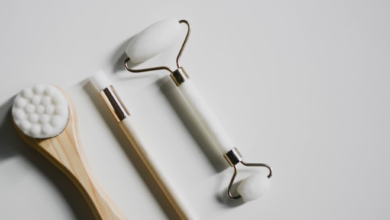What is the Difference Between Acne and Pimples?
Common skin issues can range from mild to severe and may include conditions such as acne, eczema, psoriasis, rosacea, and allergic reactions. Understanding these issues is essential for maintaining skin health and seeking appropriate treatment when necessary. If you’re dealing with a skin problem, it’s important to consult with a dermatologist to get the right diagnosis and treatment plan.
The terms ‘acne’ and ‘pimples’ are often used interchangeably, but they have different meanings. One refers to a blemish, while the other describes an ongoing skin condition. Understanding your skin concerns is crucial to help you take care of your skin condition. Non-inflamed pimples can usually be improved with over-the-counter products, while serious acne may require a dermatologist’s consultation.
Understanding Acne
Acne is a common skin condition caused by the clogging of hair follicles under the skin. This occurs when sebum (skin oil) and dead skin cells block the pores, leading to outbreaks of pimples or zits. While acne commonly appears on the face, it can also affect the back, chest, and shoulders.
Acne is an inflammatory disorder of the skin that involves the sebaceous glands, which are connected to hair follicles. Normally, these glands produce sebum that is released onto the skin’s surface through pores. However, in acne, a combination of hair, sebum, and skin cells obstructs the pores, allowing bacteria to grow and causing inflammation. When the wall of the plugged follicle breaks, it results in the formation of pimples and lesions on the skin.
-
Causes of Acne
Acne is caused by clogged hair follicles or pores, which occur due to sebum, bacteria, or dead skin cells. When pores are clogged, they can lead to inflammation, pain, swelling, and skin discoloration.
-
Types of acne
To effectively treat acne, it’s important to identify the type you have. Acne can be classified as either noninflammatory or inflammatory, with various subtypes falling under these categories:
- Whiteheads
- Blackheads
- Cystic Acne
- Papules
- Pustules
- Nodules
-
Acne Treatment
Acne vulgaris is a chronic inflammatory condition that typically requires a comprehensive treatment approach. Common treatments include:
- Topical Treatments: Applying medication to the skin, which includes retinoids, benzoyl peroxide, and antibiotics.
- Oral Medications: For moderate to severe acne, oral antibiotics and isotretinoin are commonly used. Isotretinoin is particularly effective for severe acne but has significant side effects.
- Hormonal Treatments: Oral contraceptives like triphasic ethinyl-oestradiol and norgestimate are effective for women with hormonal acne.
- Laser and Light Therapies: Fractional CO2 laser and blue light therapy are used for treating acne scars and active acne lesions, respectively.
Understanding Pimples
Pimples, a common skin issue, occur when oil glands become clogged or inflamed or due to an increase in acne-causing bacteria. They come in various forms, such as blackheads, whiteheads, and cysts. Treatment options range from home remedies to over-the-counter and prescription medications.
Pimples, also known as zits or spots, are small inflammations of the skin that often result in visible swelling. They can vary in appearance and may become inflamed or change color. Pimples are commonly associated with acne and tend to appear on the face, chest, shoulders, and upper back.
-
Causes of Pimple
Skin can become irritated by contact with certain things, leading to the development of pimples. When people think of pimples, they usually think of acne. Pimples form when the oil glands (sebaceous glands) all over your body become clogged or inflamed. This can happen due to increased production of oily material (sebum) by the sebaceous glands, abnormal formation of keratin or an increased presence of bacteria on the skin.
-
Pimple Treatment
Pimples, often a less severe form of acne, can be treated with simpler and more targeted approaches:
- Topical Applications: Over-the-counter treatments like salicylic acid, sulfur, and benzoyl peroxide are effective for treating pimples by reducing inflammation and preventing bacterial growth.
- Home Remedies: Some studies suggest that everyday items like toothpaste can help dry out pimples, although these methods are less reliable and not universally recommended.
- Cosmetic Procedures: Microdermabrasion and chemical peels can help reduce pimples and improve skin texture.
Comparison Between Acne and Pimples
It’s essential to remember that acne is a disease, with pimples serving as a symptom. Both pimples and acne-prone skin are influenced by a variety of common factors, but it’s important to recognize the key differences in their causes. By gaining a deeper understanding of your skin concerns, you’ll be better equipped to select the most effective skincare products to address them.
The primary distinction between acne and pimples is that acne is a disease, while pimples are one of its cues or signs. Acne develops when skin pores become clogged due to excess sebum, dead skin cells, and environmental pollutants. These can occur during adolescence or adulthood and are not limited to any particular skin type.
Key differences in appearance: Acne is a continual and recurrent breakout on the face, neck, and chest, while a pimple is a small, pus-filled bump on the skin’s surface.
Variations in causes of acne and pimple
Acne and pimples are common dermatological conditions influenced by various factors. The complexity of these factors can vary widely among individuals, affecting the presentation and severity of the condition. Acne is caused by the clogging of hair follicles under the skin, while pimples occur when oil glands become clogged or inflamed or due to an increase in acne-causing bacteria.
The Final Word
Now that you know the difference between acne and pimples, make informed decisions about skincare and seek appropriate medical assistance when necessary. Maintain good skin care practices and use skin cosmetics to enhance and maintain your skin’s health and appearance effectively.



